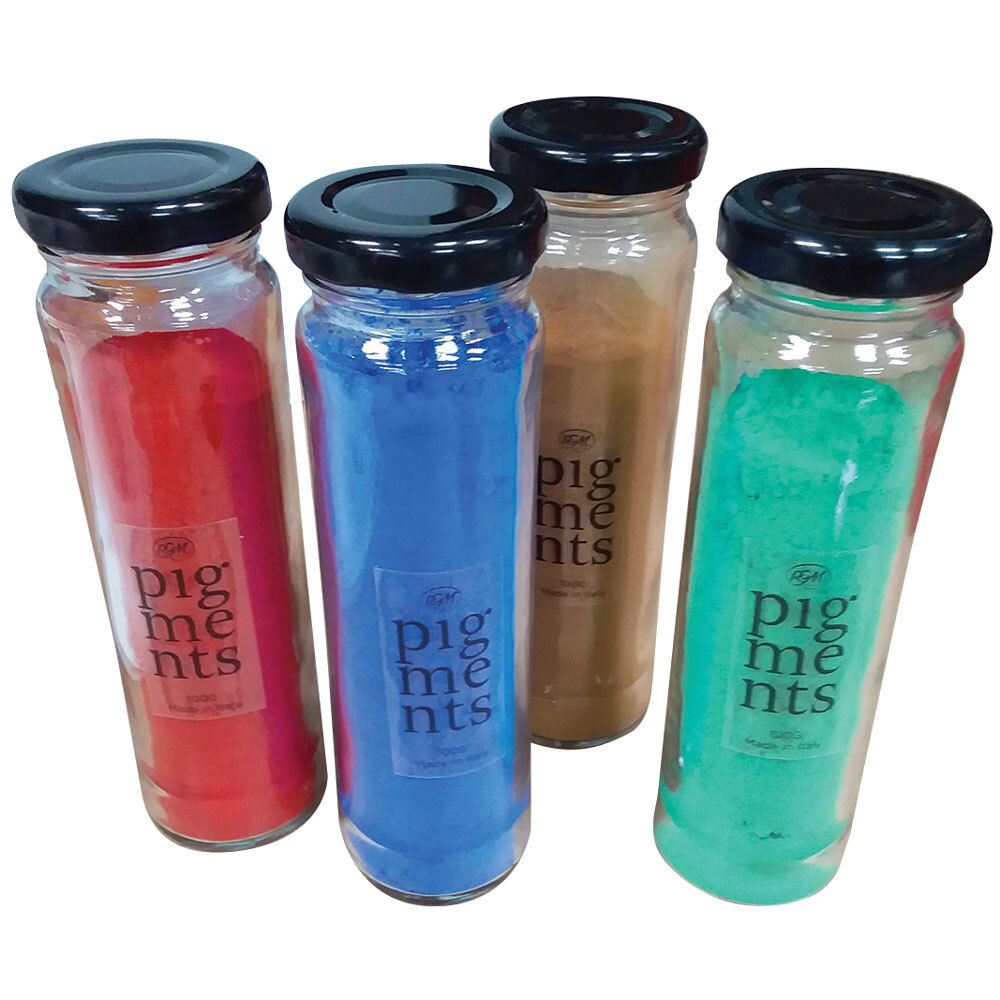RGM Pigments & The Colour Index
Understanding RGM Pigments and the Colour Index™

RGM pigment pastes are made using natural earths, resistant lacquers, and mineral-based colours, giving artists a durable, high-quality palette. To help artists better understand what’s inside each pigment, we also refer to the Colour Index™, the global standard used to identify pigments by their chemical composition.
What Is the Colour Index™?
The Colour Index™ assigns each pigment a generic code, such as:
-
PB29 = Pigment Blue 29 (Ultramarine)
-
PY42 = Pigment Yellow 42 (Synthetic Yellow Iron Oxide)
-
PR101 = Pigment Red 101 (Synthetic Red Iron Oxide)
These codes help artists understand how a colour is made, how it behaves, and whether it contains a single pigment or a mixture.
RGM Pigment Categories
1. Earth Pigments
Naturally occurring and geologically formed over thousands of years, earth pigments are among the oldest known to artists. Their durability is proven by prehistoric cave paintings that still survive today.
-
Origin: Mined from natural deposits (e.g. ochres, siennas, umbers)
-
Colour Index Examples:
-
PY43 – Natural Yellow Iron Oxide
-
PBr7 – Natural Brown Iron Oxide (includes Raw Umber, Burnt Umber)
-
-
Properties:
-
Excellent UV and light resistance
-
Natural granulation and muted earthy tones
-
Suitable for indoor and outdoor use
-
2. Lacquers
These pigments are created by fixing organic dyes to a mineral base, allowing bright, vivid colourants that would otherwise be unusable in pure form.
-
Origin: Organic pigments stabilised with mineral binders
-
Colour Index Examples:
-
PR3 – Toluidine Red
-
PG7 – Phthalocyanine Green
-
-
Properties:
-
High chroma (bright, clean colours)
-
Best for indoor use
-
Generally less lightfast than mineral or earth pigments
-
3. Mineral Pigments
Made from complex blends of metal oxides, these colours are extremely durable and weather resistant.
-
Origin: Synthesised or mined metal oxides (e.g. cobalt, chromium, titanium)
-
Colour Index Examples:
-
PB36 – Cobalt Chromite Blue Green
-
PG50 – Cobalt Green
-
PW6 – Titanium White
-
-
Properties:
-
UV and weather resistant
-
Excellent for murals, plasters, and outdoor work
-
Often opaque and stable under alkaline conditions (e.g. lime)
-
Why the Colour Index Matters
Knowing the Colour Index code:
-
Helps you choose single-pigment colours for clean mixing
-
Reveals the lightfastness and permanence of each pigment
-
Prevents surprises — not all Naples Yellows or Van Dyke Browns are made the same
By understanding pigment composition, artists can select the best RGM pigment paste for their technique, medium, and project location.
RGM Pigment Colours – with Colour Index Codes
RGM Pigment Colours – with Colour Index Codes
Earth Pigments:
-
Yellow Earth 4/0 – PY43 – Earth
-
Raw Sienna – PBr7 – Earth
-
Burnt Sienna Tor/sa – PBr7 – Earth
-
Cyprus B Burnt Umber – PBr7 – Earth
-
Dark Ochre – PY43 – Earth
-
Havana Ochre – PY43 – Earth
-
Cyprus Umber – PBr7 – Earth
-
Red Earth – PR102 – Earth
-
Pozzuoli Red – PR102 – Earth
-
Ercolano Red – PR102 – Earth
-
Veneto Red – PR102 – Earth
-
Natural Raw Umber – PBr7 – Earth
-
Burnt Umber – PBr7 – Earth
-
CCCN Burnt Umber – PBr7 – Earth
-
Brentonico Green Earth – PG23 – Earth
-
Nicosia Green Earth – PG23 – Earth
-
Cassel Brown – PBr8 – Earth
-
Rome Black – PBk11 – Earth
-
Germany Vine Black – PBk11 – Earth
Mineral Pigments:
-
Titanium White – PW6 – Mineral
-
Lemon Ceram Titanium Yellow – PY53 – Mineral
-
Orange Cadmium Yellow 3300 – PY37 – Mineral
-
Medium Cadmium Red 3540 – PR108 – Mineral
-
Dark Cadmium Red 3800 – PR108 – Mineral
-
Pure Chrome Oxide Green – PG17 – Mineral
-
Deep Turquoise Blue – PB28 – Mineral
-
Deep Cerulean Ceram Blue – PB36 – Mineral
-
Deep Cerulean Ceram Blue 2 – PB36 – Mineral
-
Pure Ultramarine Blue – PB29 – Mineral
-
Black Ivory – PBk9 – Mineral
Lacquer Pigments:
-
Sint Cinnabar Red – PR106 – Lacquer
-
Sint Emerald Green – PG7 – Lacquer
Special Effect Pigments:
-
Pearlescent Iridescent White – Mica-based – Special Effect
-
Pearlescent Iridescent Micaceous Gold – Mica-based – Special Effect
